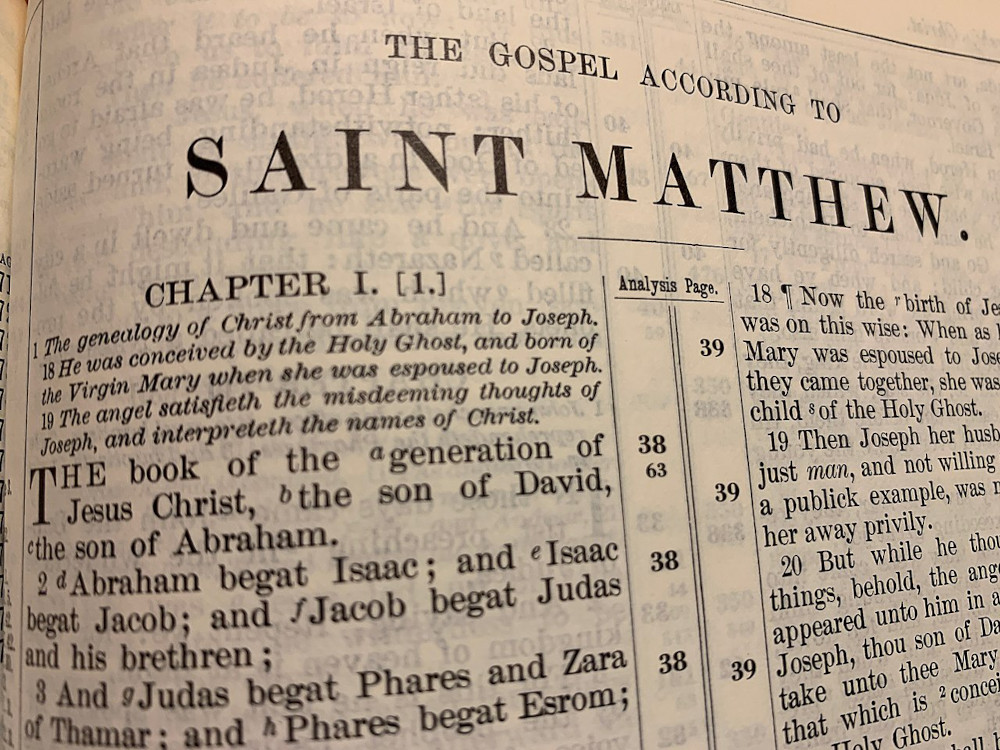It seems as though Matthew and Luke have taken turns providing pieces of a Christmas jigsaw puzzle. Luke gives us the shepherds and Matthew, the wise men. Mary meets the Archangel Gabriel in Luke; Joseph encounters a reassuring angel in a dream in Matthew.
Why do Matthew and Luke offer us different nativity stories? Is a beautiful explanation of why we have such different accounts in the two gospels that tell the Christmas story. It’s on the Psephizo website run by Dr Ian Paul, an evangelical leader in the church of England.
In everyday life, if we read two very different accounts of an event in two different newspapers or see them on two TV news services, our instinct might be to think one of them has it wrong, or maybe more media-cynically, that both have it wrong. Still, writer James Bejon, who works at Tyndale House, an evangelical research facility in (Cambridge, UK) gives us an explanation of why both have the story right – and why they wrote it from two different viewpoints.
“The hypothesis I’ll advance is as follows. Jesus was born in tumultuous times. The events of his birth included a census, a massacre, a flight to Egypt, and many other things besides, and Matthew and Luke took these events to be significant—i.e., to frame Jesus as the fulfilment of Biblical history—but each writer focused on different aspects of them. For Matthew, Jesus is a Moses-like deliverer who presents an immediate threat to the world’s Herods. As far as Matthew is concerned, then, Jesus’ presentation at the Temple and childhood in Nazareth are irrelevant, and to include them would be a distraction. Meanwhile, for Luke, Jesus is a more subversive and Samuel-like figure who grows up and in around the Temple. From Luke’s perspective, then, Jesus’ stay in Bethlehem (after his presentation at the Temple) and flight to Egypt are irrelevant, while his presentation at the Temple and (undramatic) childhood are highly relevant.
“That Matthew and Luke don’t write the way we might expect is, therefore, quite true, but it’s evidence not of their historicity but of the purpose and sophistication of their narratives (not to mention the climactic nature of their Messiah’s entrance into world history). If, by today’s standards, that makes elements of their narratives ahistorical, then it makes elements of their narratives ahistorical. But trustworthiness and conformity to (modern-day) expectations are two different things.”
James Bejon tackles objections that critics raise about the Luke and Matthew narratives – especially attempts to say they contradict each other. For example, he tackles the intriguing question of why the two genealogies of Jesus are different.
“Matthew and Luke were familiar with the OT. Matthew, therefore, had names available to him, which he chose not to include in his genealogy, and Luke had a whole ancestral line (from Shealtiel to David) available to him, which he chose not to include in his genealogy (compare 1 Chron 3). More radically, consider the Gospel of John. Do we think John was unaware of the things he didn’t mention in his gospel (e.g., Jesus’ temptations, parables, exorcisms, transfiguration, and institution of the Lord’s supper)?
“Like all authors, Matthew and Luke wrote with specific purposes in mind. Each man wanted to tell Jesus’ story in his own way—to highlight particular themes of Jesus’ ministry, to emphasise particular parallels between Jesus’ ministry and OT history, and so on. And if we pay attention to how they did so, it will help us make sense of their selection of material.”
Please go to Psephizo (which is the Greek word meaning ‘to calculate’, ‘work out’ or ‘reckon’) and read all of it. Why do Matthew and Luke offer us different nativity stories?

